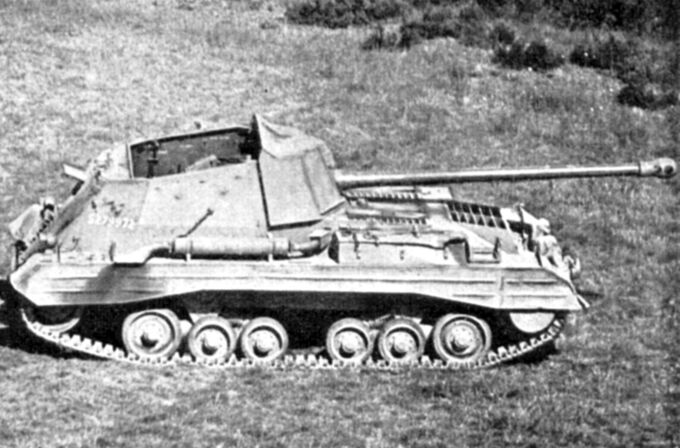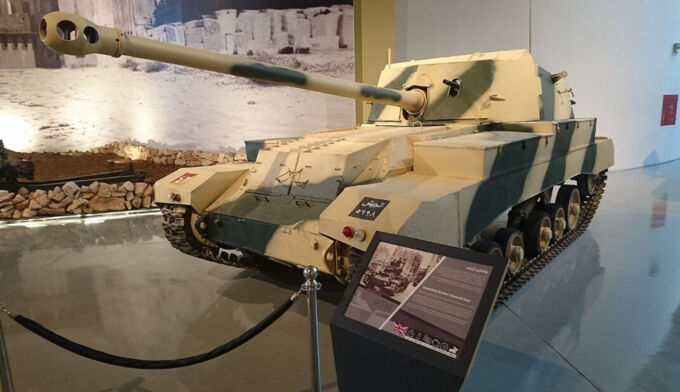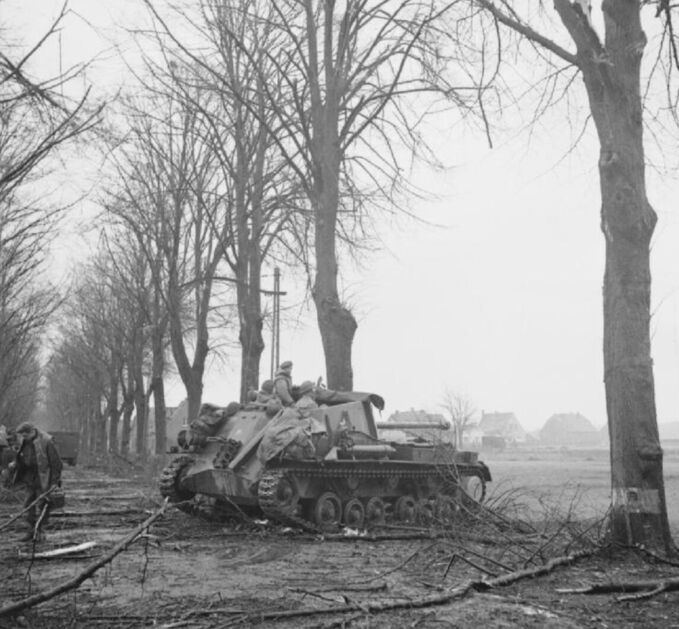The Archer was one of the most unusual tanks of World War II, developed and produced by Britain. It was based on the chassis of the Valentine infantry tank and armed with the 17-pounder anti-tank gun. What made the Archer unique was that its gun faced the rear of the vehicle, meaning the tank often had to be reversed into firing position. Approximately 665 units were built.
Technical data
| Length | 6.7 meters |
| Width | 2.76 meters |
| Height | 2.25 meters |
| Weight | 15 tons |
| Crew | 4 man (commander, gunner, loader, driver) |
| Main armament | 76.2 mm L/55 QF 17-pounder |
| Second armament | 7.7 mm Bren LMG |
| Armor | 14–60 mm |
| Power | GMC 6-71 6 cylinder diesel engine 165 HP |
| Top Speed | 32 km/h on the road, 13 km/h off-road |
| Reach | 230 km |
| Production | approx. 665 units |
Development
Based on the experience of the British Expeditionary Force (BEF) in France in 1940 during the Western Campaign, it became clear that the British Armed Forces needed a much more powerful anti-tank weapon. Across all active theaters, Commonwealth troops had encountered the effective use of the German 8.8 cm Flak against British armor.
Although the new 6-pounder anti-tank gun became available in 1941, it was already foreseeable that German forces would soon field tanks with even heavier armor, requiring a more powerful response. Thus, by the end of 1940, a decision was made to develop a 3-inch (76.2 mm) caliber gun firing a 17-pound projectile. The resulting weapon was tested and refined over the following months and was officially adopted by the British Army in May 1942.
The powerful 17-pounder gun was intended for use both as a towed anti-tank weapon and as armament for combat tanks. At the time, the primary British tank used in anti-tank roles was the Crusader. However, this tank was not suitable for mounting the 17-pounder, lacking the required engine power, a strong enough chassis, and a turret ring large enough to accommodate the gun.
While efforts were underway to integrate the gun into a proper tank design, the British Army also sought a quick solution to deploy the weapon on a mobile platform. One of the first ideas was to mount it on the chassis of the Bishop self-propelled gun. However, this proved unsatisfactory, as the size and length of the 17-pounder made it difficult to install within the Bishop’s confined superstructure.
A design study using the chassis of the Crusader tank showed that it too was unsuitable for use as a self-propelled gun. The hull did not allow for sufficient protection or functionality to operate the gun effectively in combat.
As a result, the British Ordnance Office tasked Vickers with developing an entirely new vehicle. Drawing on prior experience from an unrealized project involving the mounting of a 6-pounder gun, they chose to use the reliable chassis of the Valentine infantry tank for this new design.
Vickers-Armstrong was awarded a contract to build two prototypes. Development and construction took place between July 1942 and March 1943, followed by testing. However, the main gun was only installed and tested for about a month. The prototypes were evaluated at the British proving grounds of Shoeburyness and Larkhill.
Due to the British Army’s urgent need for tank destroyers, the Archer was developed and produced under high priority and entered service in March 1944.
The 17-pounder gun was mounted in a fixed rear-facing position (zero degrees from the rear) and had a limited traverse of 11° to either side. Its elevation range was from −7° to +15°. The fighting compartment was open at the top, allowing for a simpler superstructure design, though at the cost of crew protection.
Service
From October 1944 onward, the Archer was deployed by the Royal Armoured Corps in northwestern Europe. The vehicle remained in service with the British Armed Forces until the mid-1950s.
After the Second World War, around 200 Archer vehicles were used by the Egyptian Army, and additional units were acquired by the Syrian Army, which bought the last remaining tanks from the British.
During the Suez Crisis in 1956, Egypt purchased four batteries of Archers from the British. Each battery comprised 11 Archers. These were distributed and deployed across several infantry and armored divisions. Syria and Egypt had previously purchased a total of 200 Archers from the British and used them in the Suez Crisis. The Syrian Archers were notable for their combat effectiveness. Around 40 of the 44 Egyptian Archers were captured or destroyed by the Israeli army during Operation Kadesh in the Sinai Peninsula. Instead of replacing the lost Archers with new ones, they were replaced by Soviet Su-100s and T-34-85s.






